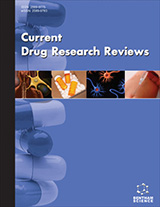
Abstract
Background: Necroptosis is a type of programmed necrosis mediated by receptor-interacting protein kinases 1 and 3 (RIP1 and RIP3), which is morphologically characterized by enlarged organelles, ruptured plasma membrane, and subsequent loss of intracellular contents. Cryptotanshinone (CPT), a diterpene quinone compound extracted from the root of Salvia miltiorrhiza Bunge, has been reported to have significant anticancer activities. However, the detailed mechanism of CPT has not been clearly illustrated.
Objective: The present study aimed to explore the cell death type and mechanisms of CPT-induced in non-small cell lung cancer (NSCLC) cells.
Methods: The cytotoxicity of CPT on A549 cells was assessed by MTS assay. Ca2+ release and reactive oxygen species (ROS) generation were detected by flow cytometry. The changes in mitochondrial membrane potential (MMP) were observed through JC-1 staining. The expressions of p- RIP1, p-RIP3, p-MLKL, and MAPKs pathway proteins were analyzed by western blotting analysis. The efficacy of CPT in vivo was evaluated by the Lewis lung carcinoma (LLC) xenograft mice model. Blood samples were collected for hematology analysis. ELISA investigated the effects of CPT on tumor necrosis factor α (TNF-α). Hematoxylin and eosin staining (HE) determined the tumor tissues. Proteins' expression of tumor tissues was quantified by western blotting.
Results: CPT inhibited the cell viability of A549 cells in a time- and concentration-dependent manner, which was reversed by Necrostatin-1 (Nec-1). In addition, CPT treatment increased the expression of p-RIP1, p-RIP3, p-MLKL, the release of Ca2+, ROS generation, and the MAPKs pathway activated in A549 cells. Moreover, animal experiment results showed that intraperitoneal injection of CPT (15 mg/kg and 30 mg/kg) significantly inhibited tumor growth in C57BL/6 mice without affecting the bodyweight and injuring the organs.
Conclusion: Our findings suggested that CPT-induced necroptosis via RIP1/RIP3/MLKL signaling pathway both in vitro and in vivo, indicating that CPT may be a promising agent in the treatment of NSCLC.
Keywords: Cryptotanshinone, NSCLC, necroptosis, RIP1/RIP3/MLKL, Ca2+, ROS, MAPKs.
Graphical Abstract
[http://dx.doi.org/10.1186/s13020-020-00348-4] [PMID: 32612672]
[http://dx.doi.org/10.1142/S0192415X1550072X] [PMID: 26394653]
[http://dx.doi.org/10.1038/cgt.2015.54] [PMID: 26494554]
[PMID: 26958492]
[http://dx.doi.org/10.1038/cr.2017.133] [PMID: 29076500]
[http://dx.doi.org/10.1007/s10495-014-1058-0] [PMID: 25398540]
[PMID: 28232747]
[http://dx.doi.org/10.7150/thno.54072] [PMID: 33754026]
[http://dx.doi.org/10.3390/cells8121486] [PMID: 31766571]
[http://dx.doi.org/10.1038/cddis.2016.483] [PMID: 28151467]
[http://dx.doi.org/10.1016/j.jinorgbio.2017.04.005] [PMID: 28419922]
[http://dx.doi.org/10.1016/j.celrep.2017.03.024] [PMID: 28380356]
[http://dx.doi.org/10.1016/j.heliyon.2018.e00687] [PMID: 30035237]
[http://dx.doi.org/10.1016/j.bbabio.2010.06.006] [PMID: 20550942]
[http://dx.doi.org/10.1016/j.semcdb.2019.01.012] [PMID: 30703557]
[http://dx.doi.org/10.1016/j.redox.2018.09.007] [PMID: 30237126]
[http://dx.doi.org/10.1016/j.bbrc.2020.04.150] [PMID: 32471717]
[http://dx.doi.org/10.1038/cdd.2010.72] [PMID: 20539307]
[http://dx.doi.org/10.1111/bph.13184] [PMID: 25953698]
[http://dx.doi.org/10.3892/or.2018.6638] [PMID: 30106122]
[http://dx.doi.org/10.1186/s13020-020-00303-3] [PMID: 32158495]
[http://dx.doi.org/10.1016/j.jep.2017.04.026] [PMID: 28456578]
[http://dx.doi.org/10.2174/1871520615666150907093036] [PMID: 26343144]
[http://dx.doi.org/10.3390/ijms19092739]
[http://dx.doi.org/10.1038/nature10558] [PMID: 22002608]
[http://dx.doi.org/10.1016/j.freeradbiomed.2017.04.010] [PMID: 28414098]
[http://dx.doi.org/10.1016/j.cellsig.2017.01.004] [PMID: 28065786]
[http://dx.doi.org/10.1186/s13020-020-00305-1] [PMID: 32175001]
[http://dx.doi.org/10.1002/jcp.30145] [PMID: 33151563]
[http://dx.doi.org/10.1038/nrm.2016.149] [PMID: 27999438]
[http://dx.doi.org/10.3109/10717544.2014.935530] [PMID: 25013959]
[http://dx.doi.org/10.1080/17512433.2018.1445966] [PMID: 29478343]
[http://dx.doi.org/10.2174/138945010790030956] [PMID: 19839925]
[http://dx.doi.org/10.1016/j.pharmthera.2016.03.002] [PMID: 27000770]
[http://dx.doi.org/10.2174/18715206113139990115] [PMID: 23272908]
[http://dx.doi.org/10.1038/s41423-019-0237-x] [PMID: 31076724]
[http://dx.doi.org/10.1016/j.bcp.2019.113684] [PMID: 31678492]
[http://dx.doi.org/10.1016/j.canlet.2020.01.025] [PMID: 32004572]
[http://dx.doi.org/10.1186/s12967-017-1223-7] [PMID: 28049494]
[http://dx.doi.org/10.1016/j.cell.2017.03.020] [PMID: 28388412]
[http://dx.doi.org/10.3389/fimmu.2018.02379] [PMID: 30459758]
[http://dx.doi.org/10.1002/2211-5463.13064] [PMID: 33326693]
[PMID: 32999001]
[http://dx.doi.org/10.1016/j.envpol.2019.05.026] [PMID: 31108302]
[http://dx.doi.org/10.1038/s41419-020-2317-3] [PMID: 32071301]
[http://dx.doi.org/10.1038/s41419-020-2304-8] [PMID: 32034134]
[http://dx.doi.org/10.2174/1874467213666200220142202] [PMID: 32077836]
[http://dx.doi.org/10.3390/ijms18051018] [PMID: 28486401]
[http://dx.doi.org/10.3390/jcm9030740] [PMID: 32182899]
[http://dx.doi.org/10.3390/cancers12082185] [PMID: 32764483]
[http://dx.doi.org/10.2147/IJN.S140526] [PMID: 28924347]
[http://dx.doi.org/10.2174/1874467211666180830150546] [PMID: 30173657]
[http://dx.doi.org/10.7150/jca.37529] [PMID: 32047562]


























